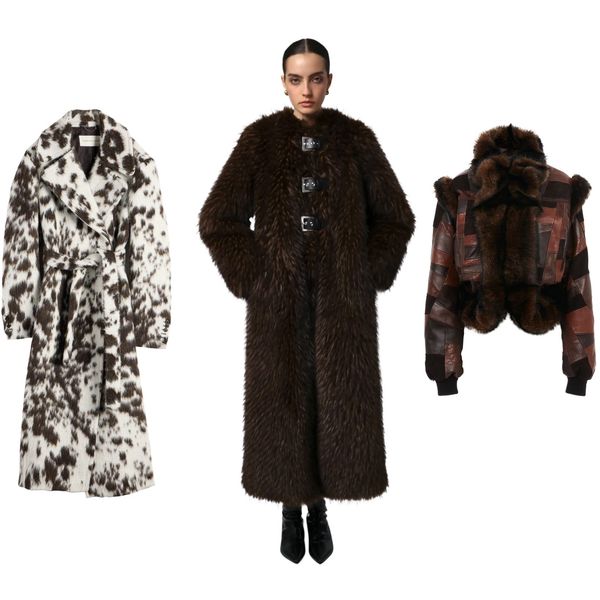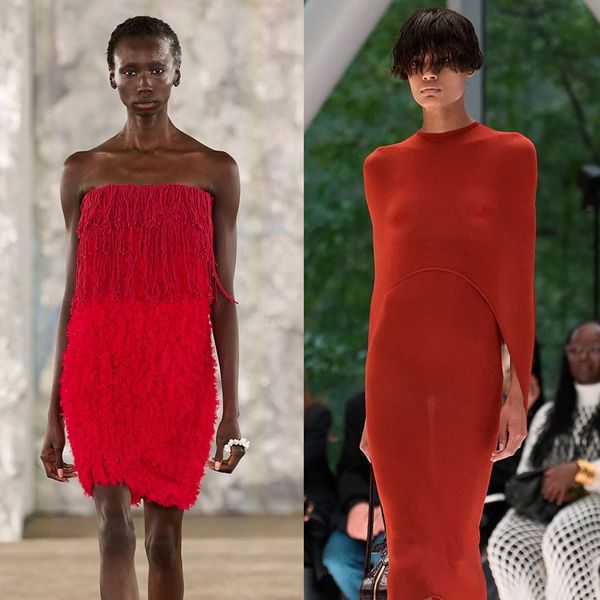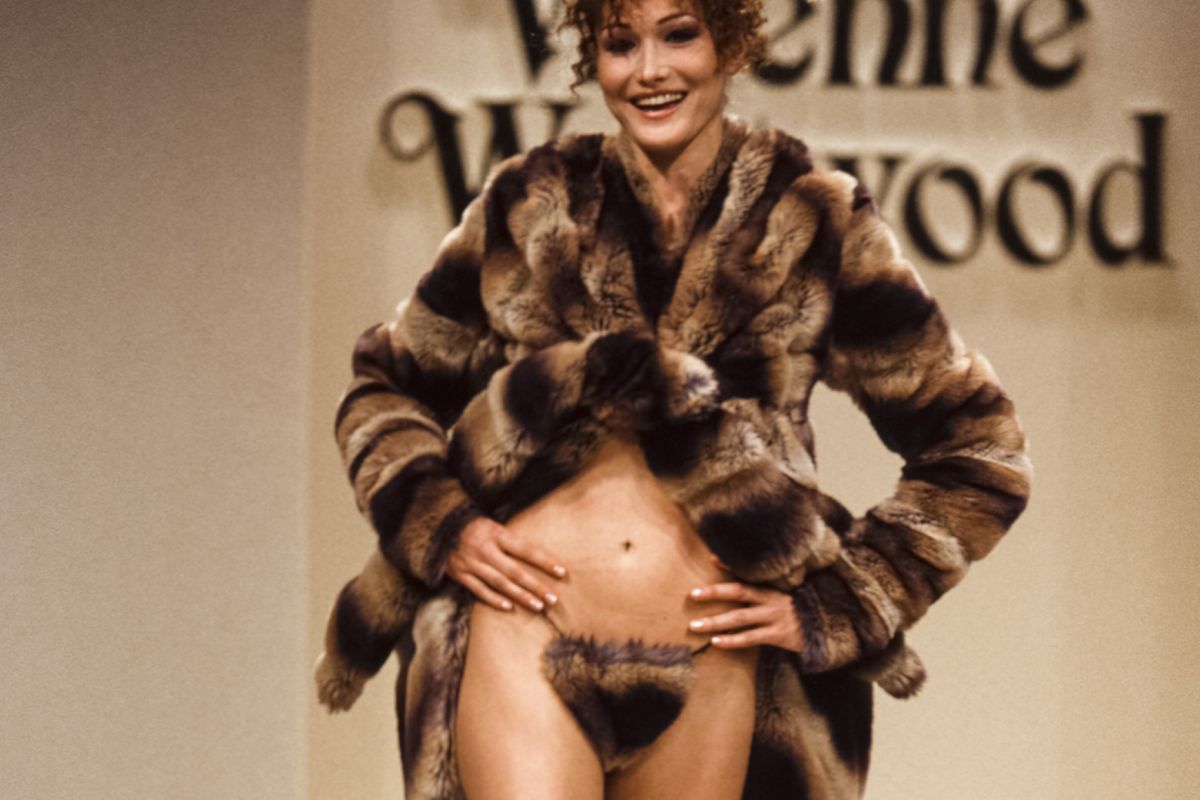
Last week, the Kim Kardashian led brand Skims released a series of thongs that emulated pubic hair. They were sold out within the day. The previous week, Duran Lantink's controversial Jean Paul Gaultier debut at Paris Fashion Week included a series of bodysuits and tops that were printed with the male anatomy, a full pelt of body hair included.
We've been discussing pubic hair more than we ever thought we'd be doing in the workplace. That's part of the beauty of being a creative, right? That nothing is off limits? But what happens when, in an industry where it feels like the goal is to keep pushing the envelope of subversion, it begins to feel as though our natural bodies are becoming a gimmick? In the wake of the aforementioned Skims thongs very quickly selling out, it begs the question: In a society where beauty standards encourage women to rid themselves of body hair, is pubic hair finally selling?
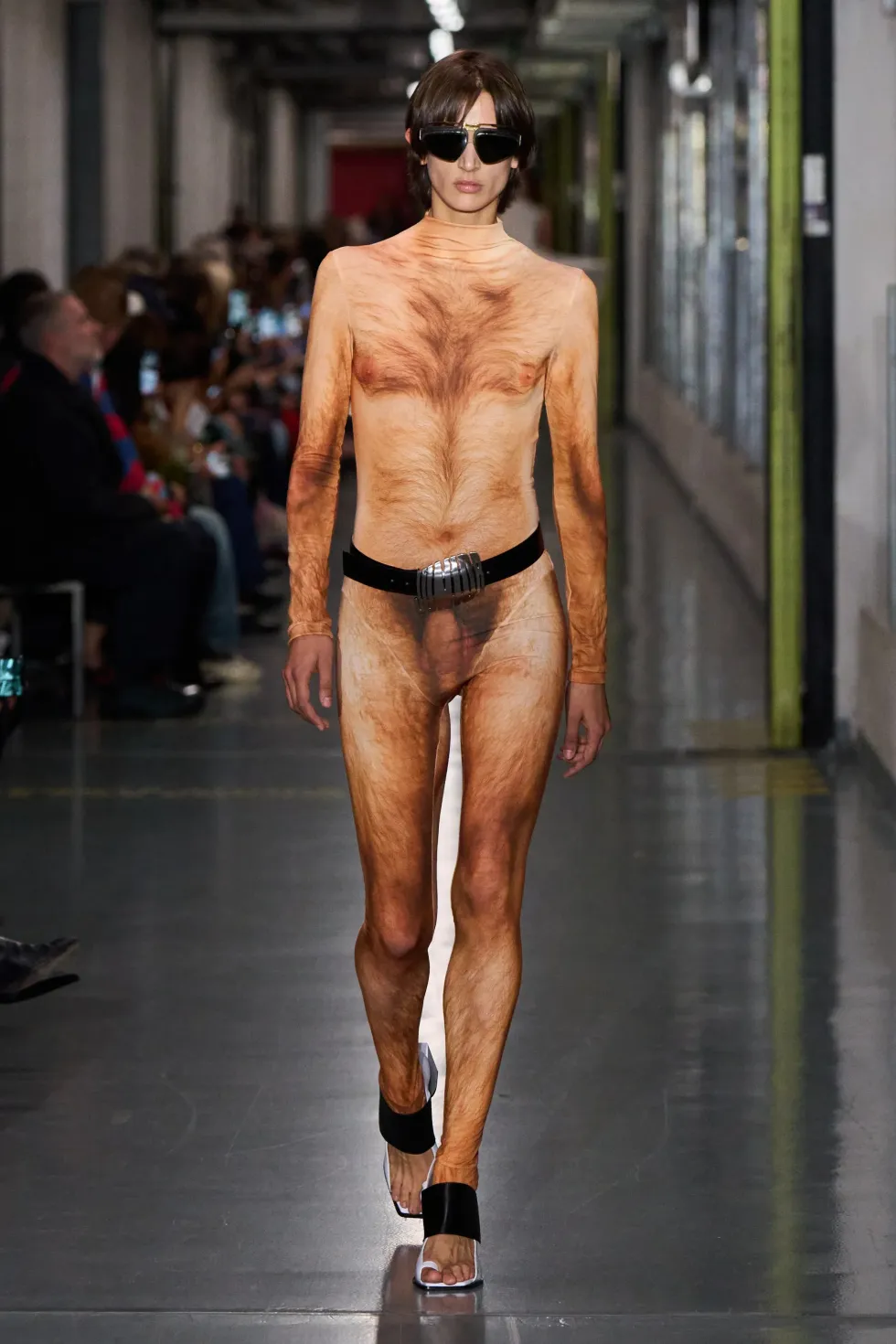
Jean Paul Gaultier Spring/Summer 2026
Courtesy of Jean Paul Gaultier
For decades, women’s hairlessness has been the beauty standard. Everything and anything–media, pornography, the general patriarchy–convinced women that their body hair was unacceptable, unsexy, unclean. The result has been a generation of women subjugated to spending their time—and money—meticulously removing their body hair by almost any means necessary in order to conform to modern beauty standards.
There have been periods of time and specific communities across the globe that have encouraged the natural look, but for the most part, western culture and patriarchy is unanimously against women’s natural states (go figure). So when did pubic hair become relevant in fashion, and why?
The industry has long made controversial contributions to the conversation on pubic hair. A high fashion pubic hair moment that remains engrained in our memories is the 2003 Tom Ford for Gucci campaign. This campaign featured a male model admiring the Gucci logo shaved and formed in the female model's pubic hair. In other words, the woman was branded. While it's easy to admire Ford's fearlessness when it came to pushing boundaries of subversion, this campaign naturally came along with plenty of controversy. The outrage was widespread, and included calls for him to be immediately fired, but for Ford, it was just another one of his marketing exercises that earned him the fashion world’s title of the King of Sex.
For John Galliano’s first and only Maison Margiela Spring/Summer 2024 Haute Couture show, models sauntered down the runway in sheer dresses with merkins underneath. The show was received to immense praise, and the occasional outraged onlooker. But many, including fashion writer @couturesoireebyadeel , simply saw it as art or theater: “Each merkin, akin to a poetic brushstroke, transforms the catwalk into a canvas of unconventional elegance. It’s not merely a fashion show; it’s a Spring 2024 masterpiece, a testament to Galliano’s commitment to the extraordinary,” he wrote.
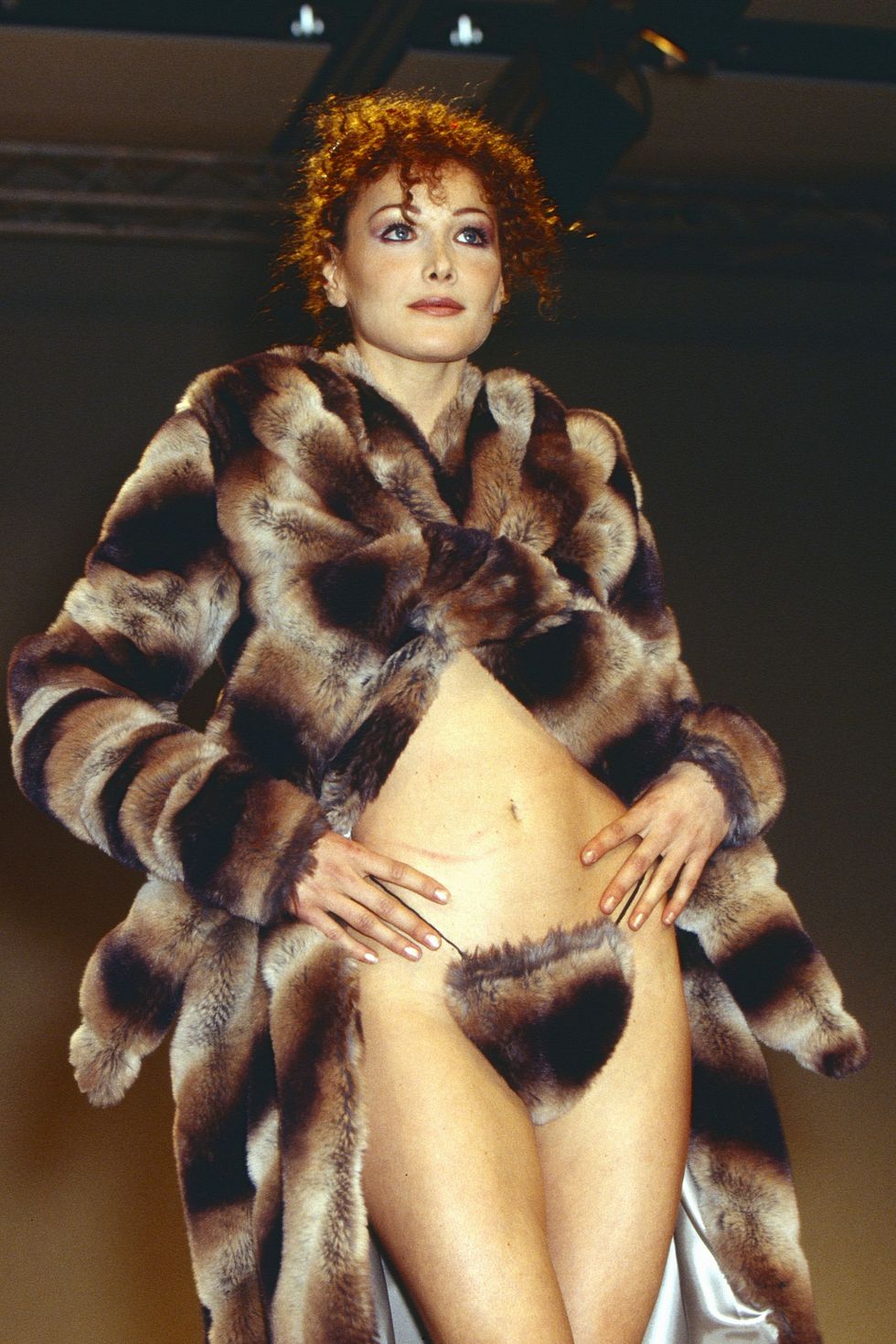
Vivienne Westwood Fall 1994
Getty Images
Merkin's weren't new to the runway at this point, though. In 1994, model Carla Bruni stepped onto Vivienne Westwood’s Fall 1994 runway in a fur merkin that matched the coat she was wearing. For Westwood, her collection titled “On Liberty” was about celebrating the female form through the accentuation of breasts, hips, and buttocks, and with, of course, merkins. “My job, more than anything, is to idealize women,” Westwood once said. She did just that through this collection which was, unsurprisingly, met with both praise and controversy.
Controversy and shock factor are part of the Kardashian brand ethos, so we shouldn't have been too surprised when Skims thongs with fake pubic hair in a range of nine colors became available to purchase. While the thongs have inspired a lot of discourse and conversations which is great publicity for the Skims brand, are the conversations even worth having if Kardashian herself hasn’t explained why she is selling this product, or if she’s not interested in having a conversation about it?
There is something about pubic hair being touted as fashionable just because Kim Kardashian said so that doesn't sit quite right with me, and the same could be said for many things that people have been embracing throughout history without recognizing that are suddenly appropriated and popularized by celebrities, especially when it comes to the Kardashians.
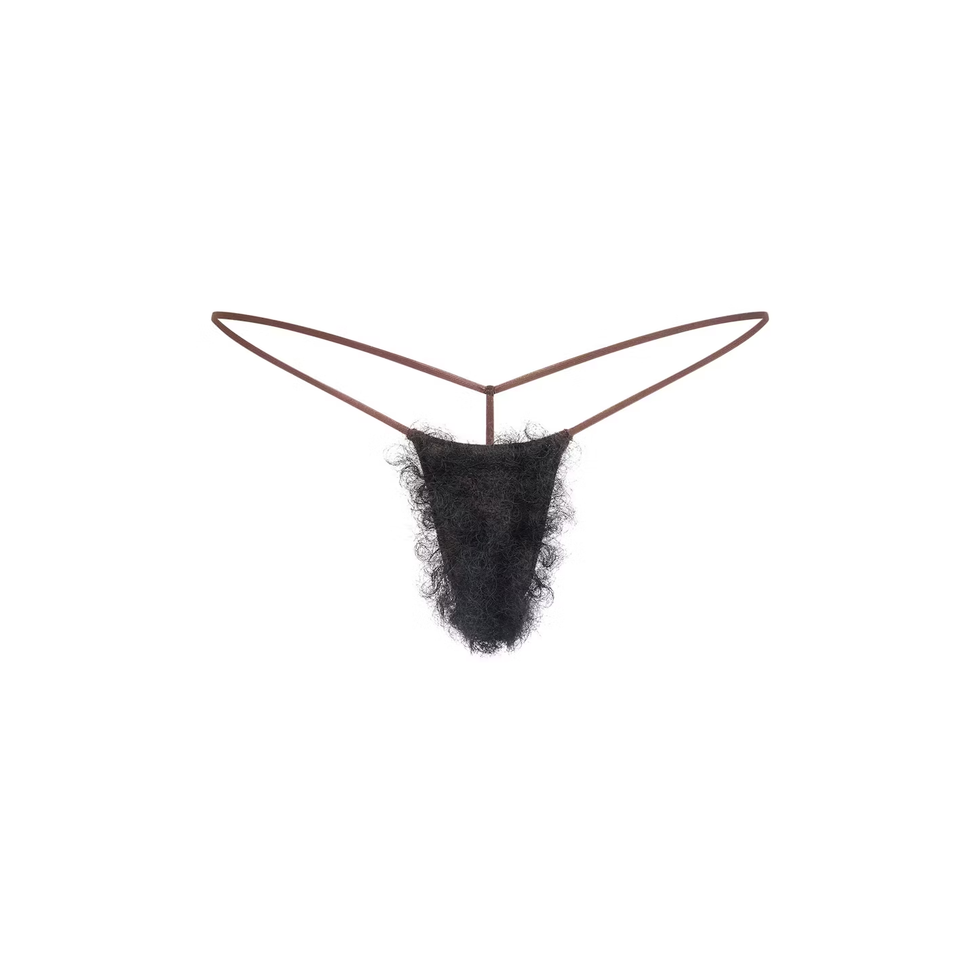
Skims
Kim Kardashian's brand is largely built on her body and appropriated Black features. For example, big lips and big butts were historically made fun of when they were attached to a Black body, but are now mainstream, partially because of the Kardashians surgically and culturally positioning themselves in proximity to Blackness. Kardashian’s legacy is one that has always sold us body-trend specific merchandise, from waist trainers to skinny tea to the now shape-wear empire she has built. So are we really that surprised that Kim Kardashian now pushes merkin-inspired thongs, nipple bras, and face shapers? Her brand—both Skims and personal—has been about body enhancement, so it shouldn't really be shocking anymore. But somehow it still is. Because she has pivoted from selling the body ideal to selling gimmicks, which, especially when the gimmick is designed around the natural female state, doesn’t feel particularly empowered.
It goes without saying that body hair positivity is a good thing, so does it matter who is starting the conversation? The answer is in those who have the most cultural impact at the moment, and someone who has it in spades, is Kim Kardashian. It's easy to say do what you want with your body and free the bush, but when it’s coming from someone like a Kardashian, we have to wonder if it’s the beginning of a wider trend.
Unfortunately, a gimmick is a gimmick in Kardashian’s world, who was quoted saying “It was just a fun, silly idea” and “It was so funny”, and clearly has no intention of contributing to the already established discourse.
While Tom Ford used pubic hair in a campaign, he was not, like Kardashian, attempting to sell the concept of bodily autonomy. He was alluding to sex and possession—controversial topics in the fashion world, but one that still marketed itself as artistic expression. Using merkins on a runway or in a campaign is one thing. Profiting off pubic hair and treating it as a joke is completely different. Would pubic hair be considered hot, sexy, cool, and fashionable enough for the Skims thongs to so quickly sell out if this wasn't Kim Kardashian's “idea”? Probably not, and that’s part of the problem. For some, the Kardashians have established themselves as the ideal, both in terms of physical appearance and style, so anything that they sell, whether that be an item or a concept, will be bought. What’s important to remember here, is that the Kardashians are on no one's side but that of financial gain. Next time we collectively engage in a gimmick, let’s agree to not have it be at the expense of a woman’s natural state.

